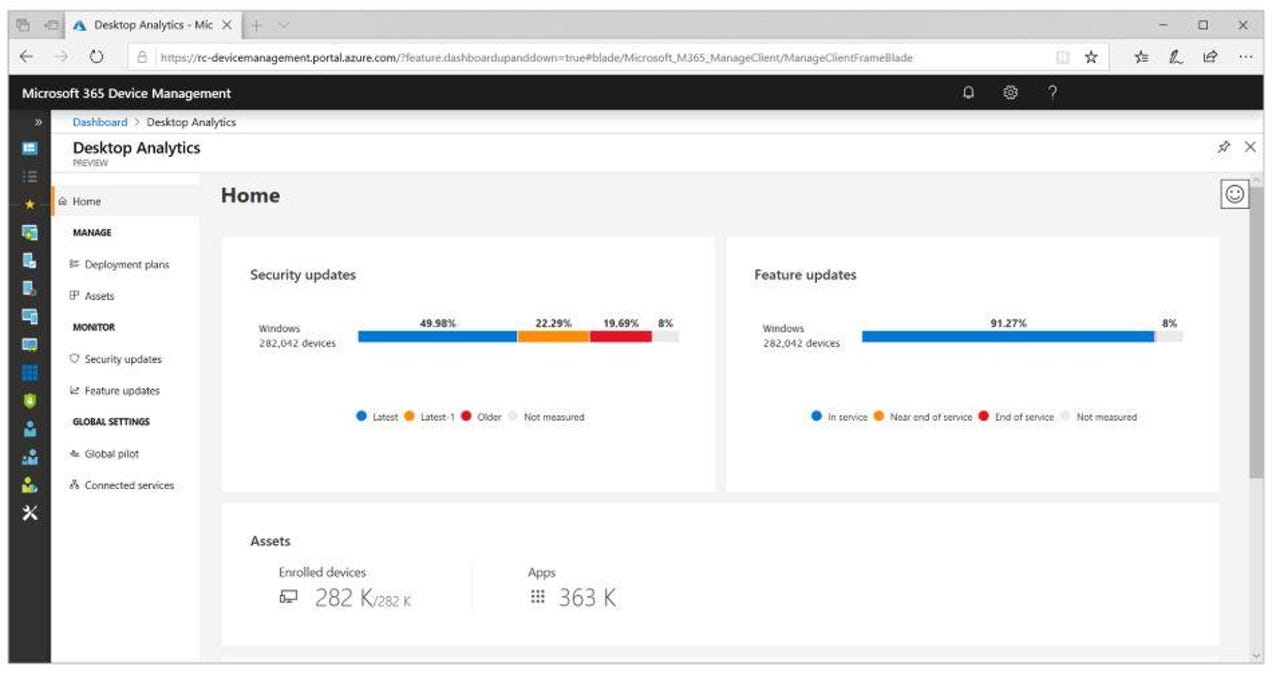Microsoft's Desktop Analytics service for assessing compatibility of Windows endpoints is generally available


Windows 10
Microsoft is starting to roll out its Desktop Analytics service as of today, October 16. Desktop Analytics -- formerly known as Windows Analytics -- is meant to provide IT professionals with update-readiness details about their managed Windows endpoints.
Desktop Analytics provides information about companies endpoints, applications and drivers so they can assess compatibility with the latest Windows feature updates and receive mitigation recommendations about them. The service also provides analytics about users' line-of-business applications. Desktop Analytics is integrated with System Center Configuration Manager.
Desktop Analytics, when combined with SCCM, can be used to create an inventory of apps running in an organization; assess app compatibility with the laest Windows 10 feature updates; identify compatibility issues and receive suggestions for remedying them; create pilot groups for testing; and deploy Windows 10 to pilot and production-managed devices. More information on how to set up and use Desktop Analytics is available in Microsoft's documentation.
Microsoft delivered a public preview of Desktop Analytics in March.At that time, officials acknowledged Desktop Analytics could not be used to assess the health and readiness of Office 365 ProPlus (which was originally part of the Windows Analytics charter).
Desktop Analytics requires users to have a subscription to Windows 10 Enterprise E3 or E5; Microsoft 365 F1, E3 or E5; Windows 10 Education A3 or A5; Microsoft 365 A3 or A5; or Windows Virtual Desktop Access E3 or E5. It is not available to use with Windows 10 Long Term Servicing Channel upgrades. It's "designed to best support the in-place upgrade scenario," not upgrades involving switches from 32-bit to 64-bit architectures, Microsoft's documentation says.